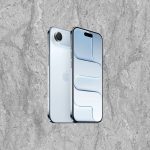How do I maintain an Apple Butterfly Keyboard Assembly?
Related Articles
- What is the iPhone Air?
- What does it mean when an external hard drive format is for Mac or for Windows?
- Designed by Apple in California. Loved in Colorado.
- How do I migrate my iTunes and App Store purchases to another Apple Account.
- Boulder Mac Repair is currently purchasing Apple Devices for resale.
Apple produced the butterfly keyboard assembly in its MacBook models from 2015 to 2019.
The butterfly mechanism was introduced with the 12-inch MacBook in 2015 and later extended to the MacBook Pro lineup. However, due to widespread complaints about reliability issues, including problems with key sticking and failure, Apple discontinued the butterfly keyboard design.
In 2019, Apple announced that it would be transitioning away from the butterfly mechanism in favor of a more reliable scissor-switch mechanism. The MacBook Air and MacBook Pro models introduced in 2019 and later adopted the new scissor-switch keyboard, known as the Magic Keyboard.
The Apple butterfly keyboard assembly faced various issues that led to its failure and widespread criticism. Some of the common causes of failure with the butterfly keyboard assembly include:
- Dust and Debris Ingress:
- The butterfly keyboard’s low-profile design made it more susceptible to dust and debris ingress. Particles could get lodged under the keys, causing them to become unresponsive or malfunction.
- Key Sticking and Double Typing:
- Users reported issues such as keys sticking or registering multiple presses (double typing). This was often attributed to the butterfly mechanism’s sensitivity to debris.
- Keycap Fragility:
- The butterfly mechanism used in the keyboard was relatively fragile, and individual keycaps were more prone to breakage or detachment, especially under heavy use.
- Lack of Key Travel:
- Some users found the minimal key travel of the butterfly keyboard uncomfortable and less satisfying compared to traditional keyboards. This design aspect contributed to a lack of tactile feedback.
- Inconsistent Key Response:
- The butterfly mechanism’s design made keys more susceptible to inconsistent responses, leading to variations in key feel and performance across the keyboard.
- Repair Challenges:
- Repairing individual keys or the keyboard assembly itself was challenging and often required specialized tools. Users couldn’t easily address issues at home.

How do I maintain an Apple Butterfly Keyboard Assembly?
- Dust and Debris Removal:
- Use compressed air to blow away dust and debris from the keyboard. Hold the MacBook at an angle (around 75 degrees) and blow air between the keys to dislodge any particles.
- Avoid Eating and Drinking Near the Keyboard:
- Prevent accidental spills by keeping food and drinks away from the keyboard. Liquid damage can be particularly problematic for the butterfly assembly keyboard.
- Clean Hands:
- Wash your hands before using the keyboard to minimize the transfer of oils and dirt. This can help prevent keys from sticking.
- Gentle Key Presses:
- The butterfly mechanism is delicate, so press the keys with a light touch. Avoid excessive force, as it can lead to key issues.
- Close the Lid When Not in Use:
- Closing the MacBook lid when not in use helps protect the keyboard from dust and potential damage.
- Update Software Regularly:
- Keep your MacBook’s operating system up-to-date. Software updates may include improvements that enhance keyboard performance.
- Promptly Address Issues:
- If you notice any key sticking or not responding, address the issue promptly. Contact Apple Support or visit Boulder Mac Repair for assistance.
What is a butterfly keyboard assembly and how does it work?
The butterfly assembly keyboard utilized a butterfly mechanism for key actuation. Unlike traditional scissor-switch mechanisms, the butterfly mechanism was designed to provide a flatter and more stable typing experience. The key components of the butterfly mechanism included:
- Butterfly Switches: The keyboard keys were supported by butterfly-shaped hinges that resembled the wings of a butterfly. These switches were placed at the center of each key.
- Wider Key Caps: The wider key caps were intended to provide better key stability and a more uniform typing experience across the keyboard.
- Increased Key Stability: The design aimed to distribute pressure more evenly when a key was pressed, reducing wobbling and providing a more stable platform for typing.
- Reduced Key Travel: The butterfly mechanism allowed for a shorter key travel distance compared to traditional keyboards. This was intended to provide a more responsive typing experience.
Characteristics: The butterfly assembly keyboard had several distinctive characteristics:
- Low Profile: The design aimed for a thinner and lower-profile keyboard, contributing to the overall slimness of the MacBook models that incorporated this mechanism.
- Reduced Key Travel: The keys had a shorter travel distance, which could be seen as an advantage for users who preferred a more responsive feel.
- Uniform Key Feel: The butterfly mechanism aimed to provide a consistent typing experience across all keys, with each key requiring a similar amount of force to actuate.
What other types of keyboard assemblies are there?
There are several types of computer keyboard assemblies, each utilizing different mechanisms for key actuation. Here are some common types of keyboard assemblies and how they work:
- Membrane Keyboards:
- How They Work: Membrane keyboards use a series of pressure pads or membranes that make electrical contact when pressed. The keyboard consists of three layers: a top membrane, a bottom membrane, and a spacer with holes. When a key is pressed, the top and bottom membranes connect through the holes, registering a keypress.
- Characteristics: Membrane keyboards are cost-effective and have a soft key feel. They are commonly found in budget-friendly and portable devices.
- Mechanical Keyboards:
- How They Work: Mechanical keyboards use individual mechanical switches for each key. These switches have moving parts, such as a spring and metal contacts. When a key is pressed, the switch actuates, creating a tactile response and sending a signal to the computer.
- Characteristics: Mechanical keyboards are known for their tactile feedback, durability, and distinct clicking sound. They are popular among gamers and users who prefer a more responsive typing experience.
- Scissor-Switch Keyboards:
- How They Work: Scissor-switch keyboards use scissor-like mechanisms beneath each key. When a key is pressed, the scissor mechanism collapses, pushing the key down and completing the electrical circuit.
- Characteristics: Scissor-switch keyboards offer a balance between the low profile of membrane keyboards and the tactile feel of mechanical keyboards. They are commonly found in laptops and thin-profile keyboards.
- Capacitive Keyboards:
- How They Work: Capacitive keyboards use changes in capacitance to register keypresses. Each key has a capacitive sensor, and when a finger approaches, the capacitance changes, signaling a keypress.
- Characteristics: Capacitive keyboards are often found in touch-sensitive or touchpad keyboards. They are more resistant to wear and can support additional features like touch gestures.
- Optical Keyboards:
- How They Work: Optical keyboards use infrared or laser beams to detect keypresses. When a key is pressed, it interrupts the light beam, triggering the keypress.
- Characteristics: Optical keyboards can offer faster response times and are durable. They are often used in gaming keyboards.
Each type of keyboard assembly has its advantages and disadvantages, catering to different preferences and use cases. The choice of keyboard type depends on factors such as typing preferences, intended use, and personal comfort.
What types of keyboard assemblies has Apple used?
Over the years, Apple has used various types of keyboard assemblies in its Macintosh and MacBook product lines. Here are some key types of keyboard assemblies that Apple has employed:
- Mechanical Keyboards:
- In the early Macintosh computers, Apple used mechanical keyboards with individual mechanical switches for each key. These keyboards provided tactile feedback and a distinct typing experience.
- Membrane Keyboards:
- Apple transitioned to membrane keyboards in the 1990s for some Macintosh models. Membrane keyboards use pressure pads or membranes to register keypresses.
- Scissor-Switch Keyboards:
- Scissor-switch keyboards, known for their low-profile design and stability, became prominent in Apple’s laptops, including the MacBook and MacBook Pro lines. The scissor-switch mechanism was used in various iterations.
- Butterfly Assembly Keyboards:
- Apple introduced the butterfly assembly keyboard in some MacBook models, starting with the 12-inch MacBook in 2015. This unique mechanism aimed to provide a low-profile design with a more stable key action.
- Magic Keyboard (Scissor-Switch):
- In response to widespread reliability issues with the butterfly assembly keyboard, Apple transitioned to a more traditional scissor-switch mechanism called the Magic Keyboard. This design was introduced in MacBook Air models in 2018 and later adopted in MacBook Pro models.
- Touch Bar Keyboards:
- Some MacBook Pro models featured a Touch Bar above the keyboard, replacing the traditional function keys. The Touch Bar was a touch-sensitive OLED display that offered dynamic and context-sensitive controls.
- Magic Keyboard with Touch ID:
- Apple introduced the Magic Keyboard with Touch ID, incorporating a fingerprint sensor into the keyboard. This provided a convenient way for users to authenticate and make secure transactions.
- Magic Keyboard with Numeric Keypad:
- Apple also offers a version of the Magic Keyboard with a numeric keypad for users who require additional numerical input.
- What is the iPhone Air?

- What does it mean when an external hard drive format is for Mac or for Windows?

- Designed by Apple in California. Loved in Colorado.

- How do I migrate my iTunes and App Store purchases to another Apple Account.

- Boulder Mac Repair is currently purchasing Apple Devices for resale.

- What’s new in iOS 26?

- What’s new in iPadOS 26?

- What’s new in macOS 26 Tahoe?

- Boulder
- Denver
- Crested Butte
Boulder, Colorado 80304
Saturday 10:00 to 4:00
Denver, Colorado 80204
Saturday 09:00 to 4:00
Sunday 10:00 to 2:00
Crested Butte, Colorado 81224
Saturday: Closed
Sunday: Closed
